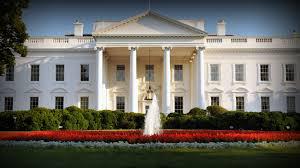White House Executive Orders Heighten Enforcement and Increase Detention

Consistent with promises made during his campaign, President Trump has signed two Executive Orders addressing border security and enforcement of immigration laws in the interior of the country. Both orders contain sweeping provisions, which will change the face of immigration enforcement in the United States.
Heightened Enforcement and Expanded Priorities for Deporation
The Executive Orders authorize heightened enforcement of the immigration laws across the country and at all border points, expand the categories of enforcement priorities for deportation, provide for the hiring of thousands of Immigration and Customs Enforcement (ICE) and Customs and Border Protection (CBP) officers, order construction of a wall and detention facilities along the Southern Border. They also announce the Administration’s intention to sanction sanctuary jurisdictions.
New Enforcement Policies for Noncitizens Convicted Of ANY Crime
Under the new enforcement priorities, any noncitizen who has been convicted of any crime, who has been charged with any crime, who has “committed acts that constitute a chargeable offense”, who, in the opinion of an immigration officer, otherwise pose a risk to public safety or national security, or who has a final order of deportation is a “priority” for removal (or deportation) from the United States. It does not matter if the person is actually convicted or if the criminal charge is dismissed. With this Executive Order, President Trump eliminates priorities set by the previous Administration, which focused on the identification and deportation of serious criminals, gang members, immigrants who posed a threat to national security and those with final deportation orders dated after January 1, 2014.
Increased Use of Detention Centers
President Trump has ordered the increased use of detention at the border and in the interior of the United States of immigrants who are placed in removal (deportation) proceedings. This includes people fleeing torture and persecution in their home countries. Immigrants and refugees detained at the border will have no right to a bond and can be detained until their immigration court cases are completed. President Trump has ordered the construction of detention centers along the Southern Border to implement this policy, making it likely that most individuals caught up in the new heightened enforcement measures, including asylum seekers, will be detained pending the outcome of their immigration proceedings including while awaiting a hearing before an Immigration Judge
Local Law Enforcement Given Authority To Question, Report and Detain Immigrants
To implement heightened enforcement measures in the interior, President Trump will deputize state and local law enforcement officers to apprehend, investigate and detain immigrants suspected of being subject to deportation. This means that local police will have the authority to question immigrants about their status, to report their presence to the immigration authorities and to detain them, whether or not these officers have the necessary training and knowledge to fully assess an individual’s immigration status under the often complex and ever-changing immigration laws, regulations and agency interpretations.
The President has also promised to end “sanctuary” cities by denying them federal grants. Sanctuary jurisdictions protect the identity of immigrant members of their communities by refusing to share information about them with the immigration authorities. Under this new directive, federal, state, county and local authorities cannot prohibit any of their employees or entities from providing information to the federal government regarding the immigration status of those in their jurisdictions. Legal scholars believe that sanctuary cities stand on solid legal ground and anticipate court challenges should President Trump seek to restrict their federal funding for perceived noncompliance with this new directive.
Immigration Executive Orders: What Is Next?
There have been rumors that the Administration may issue other directives relating to other immigration matters, including the continued viability of the Deferred Action for Childhood Arrivals (DACA) and the expansion of the scope of immigrants who may be considered inadmissible as a “public charge” and thus not able to secure a status due to concerns about their ability to support themselves financially. However, Executive Orders have yet to be signed.
These Executive Orders do not change the immigration laws of the United States. The reasons for deportation remain the same as before President Trump took office. However, it is unclear how these Orders will be interpreted and implemented by immigration officers on the ground across the country. Although the orders mandate the hiring of thousands of new immigration enforcement officers, it will be many months if not more than a year for them to be in place, not to mention sufficiently trained.
It is important for immigrants who are at risk of deportation to speak with an attorney as soon as possible. We will continue to report on the Administration’s activities on immigration and refugee issues.
